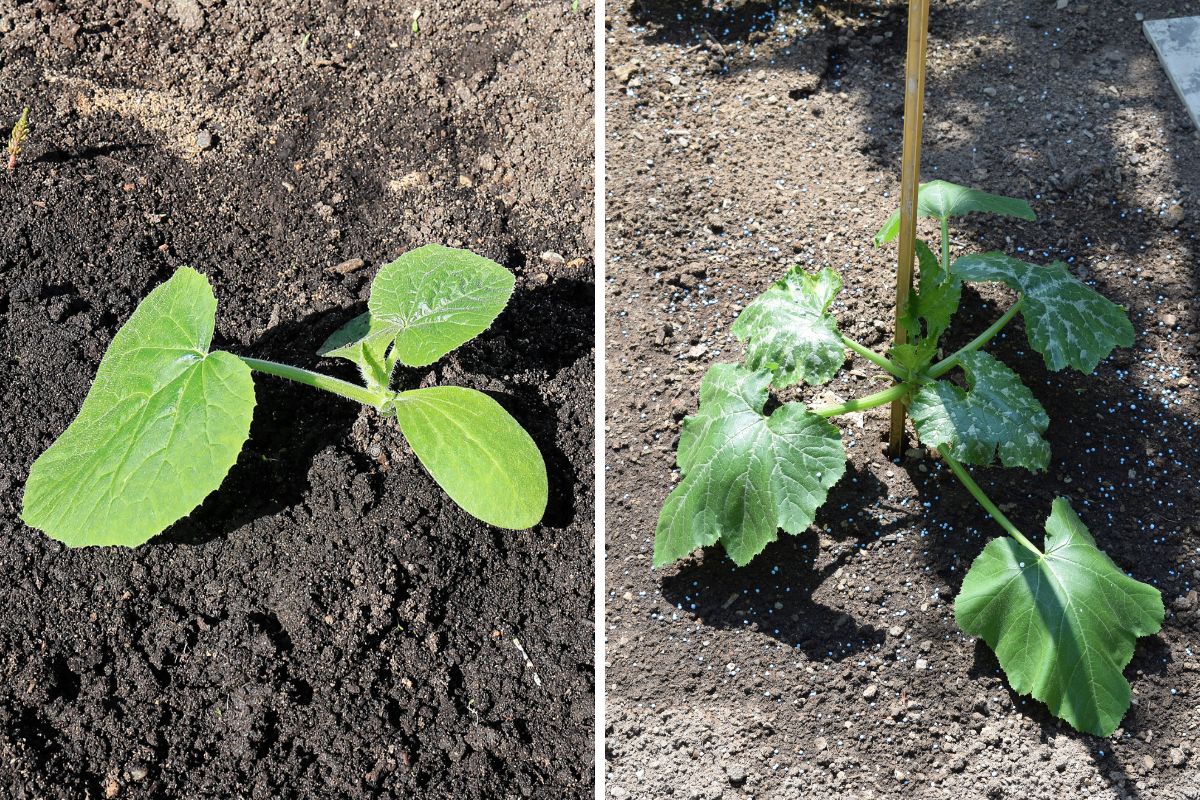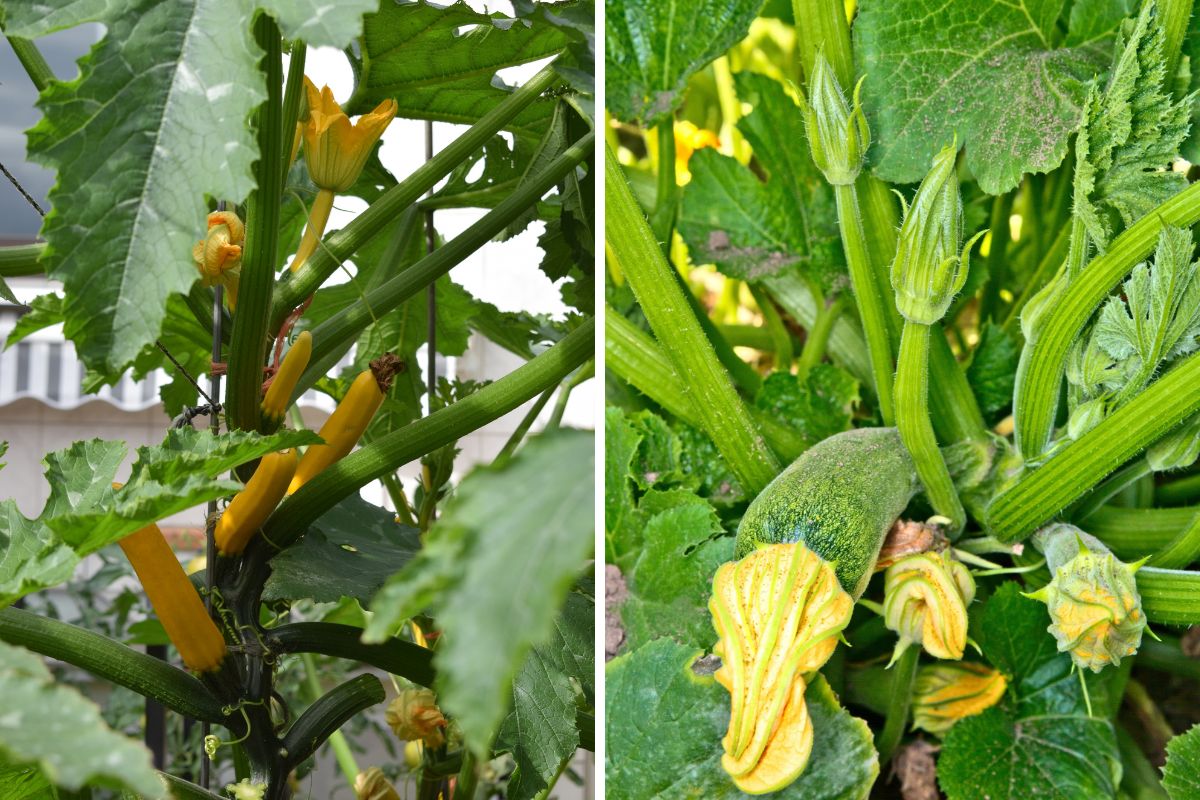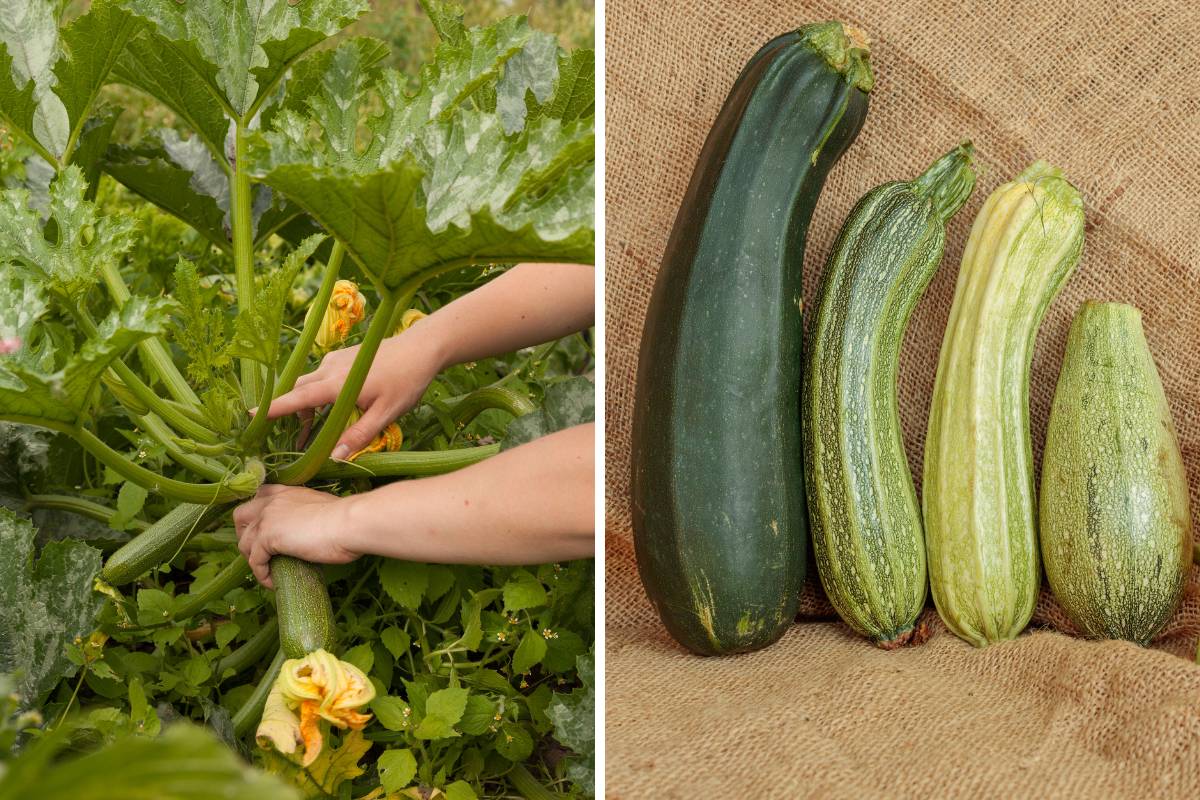Zucchini is one of the most widely grown crops in home vegetable gardens, thanks to its ease of growth and generous productivity. But the familiar sprawling, leafy bushes aren't the only way to cultivate this classic summer squash. Growing zucchini vertically brings several important advantages over traditional methods, and it's an easy technique to learn.
Why Grow Zucchini Vertically?
In its natural bushy habit, each zucchini plant takes up a large amount of space, which may be an issue in smaller gardens. But when grown vertically, each plant has a much smaller footprint in the soil, which can increase your patch's productivity in three ways.
- The more compact upwards growth means you can fit more zucchini plants into the same area, which either increases the total number of plants you can plant or reduces the overall space dedicated to the crop.
- If you choose to grow vertical zucchini using the same spacing as traditional bushes, you'll have more bare earth around each plant, which you can use to sow fast-growing, low-competition plants such as radishes or leafy greens.
- Training the plants vertically involves removing the lowest set of leaves, which are generally the first ones to start yellowing towards the end of the plant's life. Without these leaves, you can expect the zucchini's harvest period to be extended by up to four weeks.
Considering that zucchini plants tend to produce plentiful harvests without any assistance, increasing their yield may not be a priority. But growing vertically brings another enormous benefit by reducing the risks of powdery mildew, which is probably the most common issue squash growers face.
With a mildew infection, the plant's broad leaves become coated in a fine, white fungus that can eventually cover the whole plant, effectively suffocating it. Growing vertically increases the airflow around the foliage, helping to keep humidity down while making it easier to water the soil at the base without splashing the leaves. Both of these things greatly reduce the risk of mildew, especially in wetter or more humid areas.
But that's not the end of the benefits. With vertically grown plants, it's easier to remove withered or diseased leaves and stems to nip infections in the bud. It's also easier to see and harvest the fruits at their perfect size, leaving fewer behind to balloon into marrows.
How to Train Zucchini Plants to Grow Upward
Zucchini plants are botanically vines, just like their creeping pumpkin and squash cousins, but their natural growth habit is bushy and short-stemmed rather than trailing or climbing. However, they can be trained to scramble upwards relatively easily. Here's what to do:
- Before sowing, fix a sturdy stake or trellis into the soil to be used as a support. Sow the seed or transplant a seedling about 5cm away from the stake, ideally on the north side, to give it the maximum amount of sunlight.
- Keep an eye on the plant as it grows, and once the main stem is around 5cm to 10cm long, tie it gently to its support using jute string or Softy Tie. Be sure to tie in the main stem only, which is both heavy and strong enough to support the weight of the fruits that will come later. Continue tying in loosely for every 5cm to 10cm of growth, keeping the stem closely trained to the stake while allowing some space for it to thicken and flex in the breeze.
- Zucchini stems can grow surprisingly quickly, so if you miss a few days of tying and the plant head starts to droop, lift it gently back to the vertical and train it back into place with two or more closely spaced ties to give a little extra support.
- Once the flowers start to form, prune off all foliage below the lowest bloom, leaving a small amount of each leaf stem to stop the ties from slipping downward. Removing these lower leaves is the key step that reduces mildew risks, concentrates energy into fruiting, and extends the plant's harvest period. Try to take care of the task as soon as it's practical.
- Lastly, pick the fruits while they're still relatively young to encourage repeat flowering, while also keeping the weight that the stem needs to support to a sensible limit.
Zucchini will happily grow vertically if you follow these steps, and you can enjoy its generous productivity and use up less garden space while tempering the risks of mildew infection for healthier, longer-lived plants.








